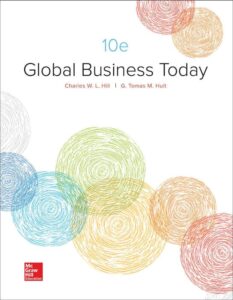Introduction
In today’s globalized business environment, managing across borders has become a crucial aspect of success for multinational corporations. With the rise of globalization, companies of all sizes are expanding their operations to multiple countries and dealing with diverse cultural, political, and economic systems. However, managing such complex cross-border operations is not an easy task, and it requires a different approach than traditional management methods.
In their influential article, Managing Across Borders: The Transnational Solution, Christopher A. Bartlett and Sumantra Ghoshal argue that the transnational model is the most effective approach for managing multinational corporations. This model combines the best practices of the ethnocentric, geocentric, and polycentric models, but avoids their pitfalls by promoting a truly global mindset. This blog post will provide a summary and analysis of the transnational model proposed by Bartlett and Ghoshal, as well as its relevance in today’s global business landscape.
Christopher A. Bartlett and Sumantra Ghoshal were two renowned management scholars and professors at Harvard Business School. They published the article Managing Across Borders: The Transnational Solution in the Harvard Business Review in 1989. Bartlett was an expert in global strategic management, while Ghoshal was known for his research on international business and management of multinational corporations. Their collaboration resulted in several influential articles, books, and case studies, making them pioneers in the field of global business management. Sadly, both authors passed away in 2008, leaving behind a legacy that continues to influence managers and scholars worldwide.
The Transnational Model
The transnational model proposed by Bartlett and Ghoshal challenges the traditional approaches to managing multinational corporations. These approaches, including ethnocentrism, geocentrism, and polycentrism, focus on either the home country, host country or regional headquarters, respectively, and neglect the global nature of the business. In contrast, the transnational model recognizes the complexities of managing across borders and aims to create a truly global organization that integrates the best of all approaches.
The key elements of the transnational model are a globally standardized core, localized adaption, and worldwide learning. The authors argue that companies should have a standardized core, such as a common brand or technology, to maintain consistency and reap economies of scale. However, they should also adapt to local markets by decentralizing decision-making and empowering local managers. This balance between global and local operations is crucial, as it allows companies to achieve both efficiency and effectiveness.
Moreover, Bartlett and Ghoshal stress the importance of worldwide learning as a core element of the transnational model. They argue that companies should encourage knowledge sharing and cross-functional collaboration across borders to foster a global mindset and promote innovation. This not only helps to develop a deeper understanding of local markets but also creates a more cohesive and effective organization.
Relevance in Today’s Global Business Landscape
The transnational model proposed by Bartlett and Ghoshal has stood the test of time and remains relevant in today’s global business landscape. The world has become even more interconnected, and companies are facing a growing number of challenges when managing across borders. These include navigating complex cultural differences, dealing with political instability, and adapting to rapid technological advancements. The transnational model provides a framework to effectively tackle these challenges and succeed in the global business arena.
Globalization has also brought about increased competition, and companies that fail to adopt a transnational approach risk falling behind. The standardized core, localized adaption, and worldwide learning elements of the transnational model enable companies to be both efficient and effective, giving them a competitive advantage in the global marketplace.
Furthermore, with the rise of remote work and virtual teams, the transnational model is even more relevant. Companies are no longer limited by physical borders and can leverage technology to promote knowledge sharing and collaboration globally. This allows for a more diverse and inclusive workforce, which has been proven to improve decision-making and drive innovation.
In conclusion, Bartlett and Ghoshal’s transnational model provides a comprehensive and effective approach to managing across borders. It recognizes the complexities of global business and promotes a truly global mindset, making it relevant in today’s interconnected world. As companies continue to expand their operations across borders, the transnational model will continue to serve as a valuable guide for successful global management.



